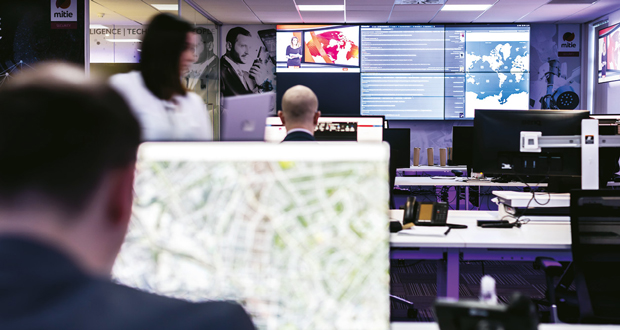 Simi Gandhi-Whitaker, Strategic Workplace & Technology Director at Mitie believes that being able to collect and interpret data proficiently is the key to the success of the digital workplace
Simi Gandhi-Whitaker, Strategic Workplace & Technology Director at Mitie believes that being able to collect and interpret data proficiently is the key to the success of the digital workplace
Before focusing on how to improve or optimise a digital workplace, it’s important to first take a step back and consider what exactly a digital workplace is. Simply put, a digital workplace is a virtual version of a physical office, where colleagues use tech to work, communicate and collaborate from anywhere. With the rise of flexible and hybrid working, ensuring colleagues are easily connected, whether they’re working in the office, from home, or in the field, is becoming more and more significant. For modern, forward-thinking facilities managers, tech and data are key to making the most of this transition.
As workplaces go digital, not only is data becoming more and more important, but so is using and learning from it, and doing so efficiently. In fact, this was identified as a key trend for business leaders in our report, Digital Transformation: is facilities management ready?(i), with one of the senior figures quoted in the report as saying: “There is a renewed focus (at board level) on data, data accuracy and data reporting. Executive boards want that data quicker, faster and cut into different ways.”
It’s clear this focus on data has evolved past simply being a trend and is now a ‘must have’ for decision makers. Insights on everything from occupancy levels to the brightness of the lights, and everything in between, are all vital in enabling FMs to better understand their workspaces and, as a result, optimise and improve them.
A PEOPLE-FIRST APPROACH
When it comes to making changes to the workplace, digital or otherwise, it’s so important to factor in the thoughts and feelings of the workforce, rather than putting in tech for tech’s sake. This is where having the evidence and data is key to ensure that these environments are optimised for everyone’s use, rather than making decisions based on a hunch. The best way to gather this insight is, quite simply, to ask people. By using detailed workplace analytical tools, such as our very own ‘Sphere’, key decision-makers can gather direct insight on how people are interacting with spaces, the tasks they need to complete whilst in them, and whether the environment currently supports their productivity. This enables businesses to better support all colleagues including those who are neurodiverse as well as consider those with additional accessibility needs.
Tech has become increasingly central to how we all do business, with most workers now relying on multiple connectivity tools, with ease of access and use in order to complete their tasks. For digital workplaces to bring the most benefit to colleagues, deployment needs to be driven by the needs of the people using it in addition to being backed and informed by data. By having this insight at an early stage, often it’s possible to implement easy, quick wins with tech that will achieve bigger outcomes – for example you might discover the reason colleagues aren’t hosting meetings in a workspace is as simple as not even being able to book a meeting space!
With physical workplaces, FMs are increasingly focusing on improving comfort and accessibility for all colleagues, providing spaces that accommodate a diverse set of people. The same applies to digital workplaces – in order to optimise the environment for the people using them, you have to first look at the data.
WAIT, WHAT IS THIS DATA FOR AGAIN?
Data, for all its benefits, can be misleading if not analysed and used strategically. Often, less is more. Collecting data on anything and everything can be a waste of time and resource and result in ‘noisy data’ – the collection of a huge volume of data that is so vast it is near impossible to effectively analyse.
It may sound simple, but the first question we ask of any customer is, ‘What problem are you trying to solve?’. It sounds so basic, but time and again we encounter businesses that aren’t focused on this central point. For more and more of the C-suite, this problem they are looking to solve is an answer to the question ‘Is my building worth the commute?’. We all know implementing technology requires an investment in both time and money – both commodities that are in high demand. However, with this insight in their arsenal, facilities managers have the firepower to make the business case to implement technology at the same breakneck speed as other sectors.






